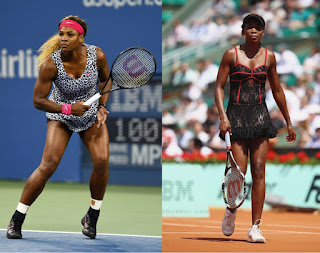 |
| Is the FO 2017 favourite in the picture? |
French Open or Roland Garros, the second Grand Slam series tournament of the year, is approaching. Yet, it has so far been talked about by tennis people in terms of Sharapova receiving a wildcard into it or not, or in terms of Federer competing or not. With Serena Williams temporary resigning the tennis Olimp to enjoy her maternity leave, and Andy Murray not winning anything significant this year, these No.1 players are not considered to be candidates for winning the trophy. Naturally, all the top ten athletes of both male and female part of the draw have equal chances for success. The truth is that reaching the quarterfinals would already be success for them. Will this Grand Slam reveal the future GOAT of reestablish the reputation of well-known public's pets?
So, who are real candidates for capturing the clay trophy?
This year the betting agencies will have hard times settling the rates for the tennis matches victories. On the one hand, there is great Nadal, still the King of Clay, having made history by winning the 10th Barcelona trophy and the 10th Monte Carlo trophy this year alone! Then there is immortal Federer, suprising everyone with Australian Open, Miami and Indian Wells titles this year, proving that 35 is the new 25 for those who are talented. Still, they both are rather doubtful favourites. Partly because that would have been too obvious and not the way tennis works, partly because they both have done so much this year - put too much effort and got too much satisfaction to "stay hungry" for more, as Federer said. Though, we still have good chances of seeing one of the good old epic Nadal-Federer finals.Wawrinca, Del Potro, Raonic, Djokovic, Nishikori, and even Dimitrov are still among those closest to victory candidates - always very close, sometimes the winners, sometimes lacking the final touch. They all have good chances under certain conditions, provided their part of the draw is not too tough or some NextGen underdog plays as if it's the last match of his life. There is also a solid, highly reputable, mostly Spanish "old school" -Ferrer, Verdasco, Almagro, Ramos-Vinolas, Bautista-Agut, Lopez, all showing stable good results - usually not good enough to win the title.
NextGen guys, in my humble opinion, have more chances to make sensatious news this year. Kyrgios, Thiem, Zverev, Edmund, Khachanov are to show their much anticipated advance this time. The question is - how tough can they stay under the two weeks' ultimate performance pressure?
All the "single" ladies...

Who's gonna take over Serena's throne?
... also have good chances. As statistics shows, not only top ten female players are subject to success - the first 50 in the rankings can boast about the same chances. Kerber is not likely to retain her top ranking for too long with out-of-play Williams still dominating her. Having put all her strength and persistence into persuing her Grand Slam goal and moving up in the rankings, she's been displaying lack of character or expressiveness recently. She is closely followed by Pliskova, Halep, Cibulkova, Muguruza, Keys, and Konta, who are equally good but not extraordinary to be considered among undoubted favourites. In most cases their game is powerful and fast, but not inventive or unpredictable. Radwanska could have outwitted all of them for her chance, but her game is lacking power and speed instead. Sharapova is expected to contribute to the rivalry tension, but having had too little professional tour practice this year, she's not likely to stay determined and stable all the way down the final. 
As for the female NextGen, it is too vague to define and give the same credit as that of the male one. With Elena Vesnina dominating in Indian Wells Masters, Laura Siegemund winning Stuttgart, and Elina Svitolina capturing the Istanbul title, there is no clear or consistent tendency in female tennis as to who's the next winner. So, there is no end to the speculations as to whether the tennis world will welcome the next "break-through" (like Muguruza last year) or some runner-up from the top will come in possession of the long-desired title. And who knows how long the triumph will last?


























